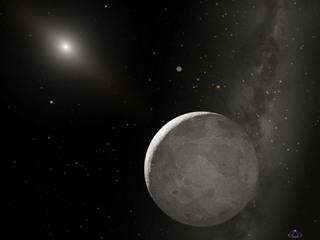
WASHINGTON (PTI): Astronomers have for the first time detected water vapour on a dwarf planet located in the main asteroid belt, between the orbits of Mars and Jupiter.
Plumes of water vapour are thought to shoot up periodically from the dwarf planet, Ceres, when portions of its icy surface warm slightly, researchers said.
Ceres, the largest and roundest object in the asteroid belt, is classified as a dwarf planet, a solar system body bigger than an asteroid and smaller than a planet.
"This is the first time water vapour has been unequivocally detected on Ceres or any other object in the asteroid belt and provides proof that Ceres has an icy surface and an atmosphere," said Michael Kuppers of ESA in Spain, lead author of a paper published in the journal Nature.
Ceres is roughly 950 kilometres in diameter. When it was first was spotted in 1801, astronomers thought it was a planet orbiting between Mars and Jupiter.
Later, other cosmic bodies with similar orbits were found, marking the discovery of our solar system's main belt of asteroids.
Scientists believe Ceres contains rock in its interior with a thick mantle of ice that, if melted, would amount to more fresh water than is present on all of Earth.
The materials making up Ceres likely date from the first few million years of our solar system's existence and accumulated before the planets formed.
Until now, ice had been theorised to exist on Ceres but had not been detected conclusively. It took Herschel space telescope's far-infrared vision to see a clear spectral signature of the water vapour.
When Ceres swings through the part of its orbit that is closer to the Sun, a portion of its icy surface becomes warm enough to cause water vapour to escape in plumes at a rate of about 6 kilogrammes per second. When Ceres is in the colder part of its orbit, no water escapes.
The results are somewhat unexpected because comets, the icier cousins of asteroids, are known typically to sprout jets and plumes, while objects in the asteroid belt are not.
The results come at the time when NASA's Dawn mission is on its way to Ceres after spending more than a year orbiting the large asteroid Vesta.
Dawn is scheduled to arrive at Ceres in 2015, where it will take the closest look ever at its surface.
 Previous Article
Previous Article Next Article
Next Article











The Indian Air Force, in its flight trials evaluation report submitted before the Defence Ministry l..
view articleAn insight into the Medium Multi-Role Combat Aircraft competition...
view articleSky enthusiasts can now spot the International Space Station (ISS) commanded by Indian-American astr..
view article